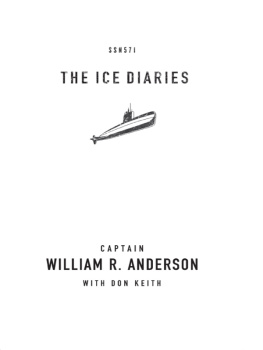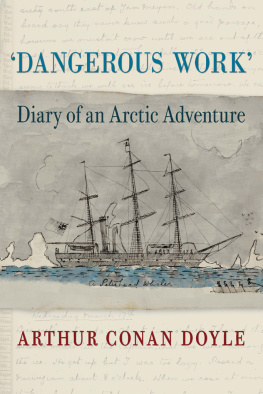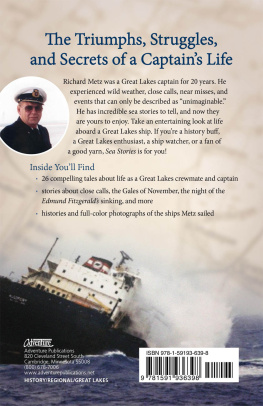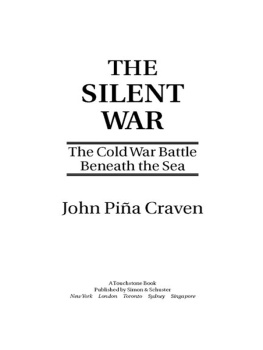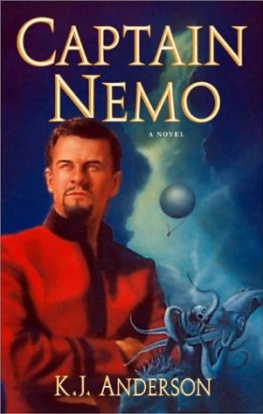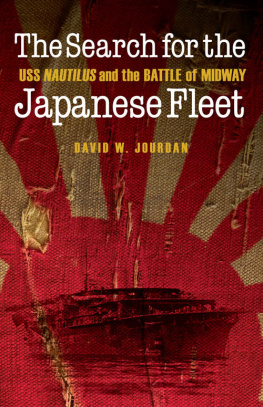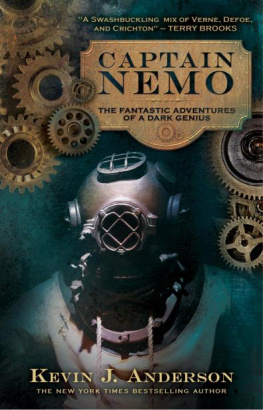THE ICE DIARIES
ALSO BY WILLIAM R. ANDERSON:
Nautilus 90 North (with Clay Blair Jr.)
The Useful Atom (with Vernon Pizer)
First Under the North Pole
ALSO BY DON KEITH:
The Forever Season
Wizard of the Wind
The Rolling Thunder Stockcar Racing Series
(with Kent Wright)
Final Bearing (with Cdr. George Wallace)
Gallant Lady: The Biography of USS Archerfish
(with Ken Henry)
In the Course of Duty
Final Patrol
The Bear: The Life and Times of
Coach Paul Bear Bryant
THE ICE DIARIES
THE UNTOLD STORY OF THE COLD WARS
MOST DARING MISSION
CAPTAIN WILLIAM R. ANDERSON
WITH DON KEITH

2008 by William R. Anderson and Don Keith
All rights reserved. No portion of this book may be reproduced, stored in a retrieval system, or transmitted in any form or by any meanselectronic, mechanical, photocopy, recording, scanning, or otherexcept for brief quotations in critical reviews or articles, without the prior written permission of the publisher.
Published in Nashville, Tennessee. Thomas Nelson is a registered trademark of Thomas Nelson, Inc.
Published in association with the literary agency of Bob Robison and Associates, 2977 Nautilus Drive, Nashville,TN 37217.
For movie rights contact Bob Robison and Associates, 2977 Nautilus Drive, Nashville, TN 37217, 615-366-6386.
Thomas Nelson, Inc., titles may be purchased in bulk for educational, business, fund-raising, or sales promotional use. For information, please e-mail SpecialMarkets@ThomasNelson.com.
Page Design by Casey Hooper
Library of Congress Cataloging-in-Publication Data
Anderson,William R., 19212007.
The ice diaries : the untold story of the Cold War's most daring mission / by Captain William R. Anderson (with Don Keith).
p. cm.
Includes bibliographical references and index.
ISBN 978-0-7852-2759-5
1. Nautilus (Submarine : SSN-571) 2. Arctic regionsDiscovery and explorationAmerican. 3. Northwest PassageDiscovery and explorationAmerican. 4. Underwater explorationArctic Ocean. 5. United States. NavyOfficersBiography. 6. Submarine captainsUnited StatesBiography. 7. Cold War. I. Keith, Don, 1947 II. Title.
VA65.N3A49 2008
359.933dc22
2007038817
Printed in the United States of America
08 09 10 11 QW 6 5 4 3 2 1
CONTENTS
T he talented and gentlemanly naval historian Clay Blair and I coauthored the book Nautilus 90 North shortly after the USS Nautilus, the worlds first nuclear submarine, made her historic transpolar crossing in August 1958. That exploration, under my command, charted a top-of-the-world, under-ice passage between the Pacific and Atlantic Oceans by way of the North Pole. But our book was necessarily incomplete. Most of what actually happened remained hidden to public eyeshighly classifiedfor years afterward. Security concerns prevented us from revealing the most interesting features and capabilities of our nations first nuclear submarine. We included very little background information on people and programs that were key in the development of Nautilus, her initial sea trials, and the under-ice explorations. Lacking also were details of behind-the-scenes events that gave impetus to the ultra-secret mission, some of which I only learned about years later.
Even though the book was essentially a restricted accounting of the historical voyage, it was a resounding success, climbing to the New York Times best-seller list in 1959. Before long, Nautilus 90 North was in print in a dozen or more different languages and distributed worldwide.
Over the years, however, it became more and more apparent that if viewed as a historical account, our book had significant shortcomings. Now I am able to tell the full story about how Nautilus and her fine crew literally broke the ice on Arctic Ocean exploration by a nuclear submarine.
Our first under-ice excursions were in September 1957. Within weeks of that historic under-ice exploration, I had a once-in-a-lifetime opportunity to suggest that Nautilus explore and chart an ocean-to-ocean route across the top of the world, transiting the Arctic Ocean via the North Pole, completely under ice. If successful, the reconnaissance would immediately gain a strategic advantage in a part of the world that the Soviet Union considered their backyard. At the time, the Soviets were our primary foe in the Cold War.
The suggestion that Nautilus was ready to make such a trip was of interest at the highest levels of government and the navy for many reasons, not the least of which was the fact that U.S. technology was viewed as lagging behind that of the Soviets. Their new Sputnik satellites were successfully circling the earth before our space rockets could get off the ground.
The person who ultimately made the decisionand the ultimate difference in the success of the secret missionwas President Dwight Eisenhower. As far as I know, he never received proper recognition for his strength and character in using the power of his office to sponsor a feat of exploration that was hailed as a technological victory in the Cold Warone that significantly boosted the sagging spirits of Americans as well as citizens of the free world all around the globe.
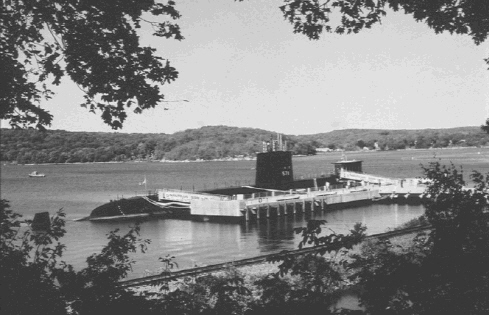
Historic ship Nautilus at the Submarine Force Museum in Groton, Connecticut.
For years now, I have been introduced as the fellow who took that submarine to the North Pole. Such a representation ignores the contributions of the many other people associated with Nautiluss most well-known accomplishment.
I hope my Nautilus shipmates, and their families and loved ones, find pleasure as well as comfort in their story, as best as I can tell it, using available records, input from crew members, and honest recollections as my guidelines. In fact, I would like to think this story would fill with pride everyone involved with the navys nuclear program as well as the captains and crews of all U.S. nuclear submarines. In particular I aim to honor those associated with the great ship Nautilus, from her designers and builders to the outstanding commissioning commanding officer, now-retired Admiral Eugene Dennis Wilkinson, his brave crew, and every crew thereafter. I also want to honor the personnel currently manning the Historic Ship Nautilus, now permanently docked and open to the public at the Submarine Force Library and Museum in Groton, Connecticut.
In telling this story, I am once again fortunate to have a talented and gentlemanly coauthor,Don Keith. Like Clay, he has authored several books about naval history and submarines, notably In the Course of Duty, a moving account of the World War II patrol of the USS Batfish when she sank three enemy submarines in three daysanother incredible feat.
I am also fortunate to have had the support of family and navy and civilian friends. I thank them for never tiring of my requests for assistance on this project. My wife, Pat, especially has wholeheartedly encouraged and helped me. In addition to her concern and insight, she has done a tremendous job of organizing all manner of materials as well as assisting with interviews and original research. I thank the family of John Krawczyk for allowing us to use many of Johns wonderful photographs. In every way, John represented the best of Nautilus
Next page
